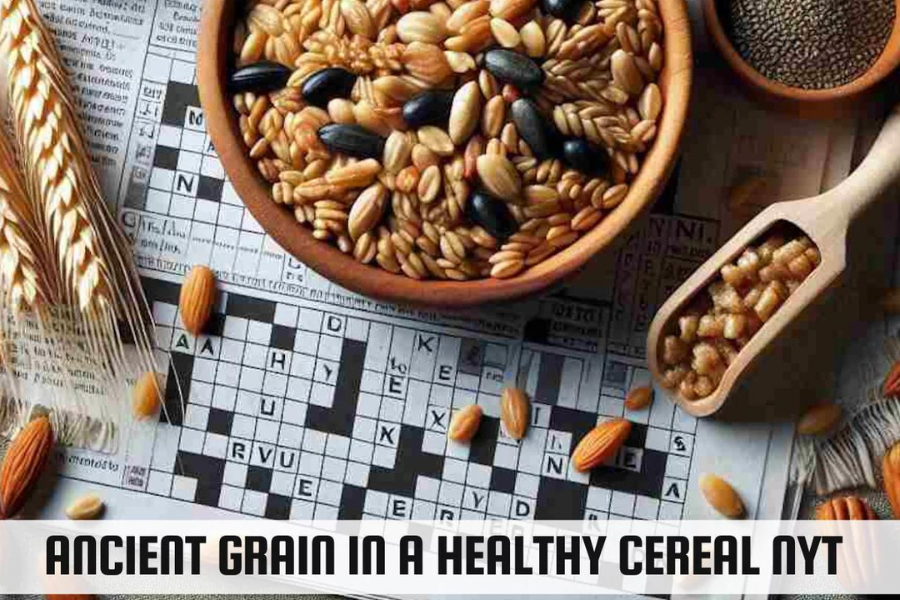Ancient Grains: Rediscovering the Nutritional Powerhouses of the Past
In today’s ever-evolving world of health trends, ancient grains have emerged as nutritional champions, celebrated for their rich history and impressive health benefits. Unlike modern cereals, which have been extensively altered to maximize yields and enhance resistance to disease, ancient grains have preserved their original structure and nutrient density. This article explores the fascinating world of ancient grains, their historical significance, and their numerous health benefits, revealing why they deserve a prominent place in your diet.
What Is Ancient Grain?
Ancient grains are cereals that have remained relatively unchanged over the centuries. Unlike contemporary wheat varieties, which have been selectively bred to improve yield and disease resistance, ancient grains retain their original characteristics. Examples include quinoa, amaranth, spelt, and farro. Their unaltered nature allows them to maintain unique flavors, textures, and nutritional benefits that modern grains often lack. These grains are not only a testament to agricultural tradition but also a reminder of how beneficial these foods can be.
The True Roots of Ancient Grains
Ancient grains have been integral to various cultures for thousands of years. Each grain has its own rich history and was a staple in the diets of ancient civilizations, highlighting their importance in historical diets.
Quinoa: Revered by the Incas as the “mother of all grains,” quinoa was a crucial part of their diet. Its resilience and high nutritional value made it a staple in the Andes region, where it was consumed for its exceptional health benefits.
Amaranth: This grain was a staple in Aztec diets. It was not only valued for its impressive nutritional profile but also played a role in religious ceremonies. The Aztecs considered amaranth a sacred food, underscoring its cultural and dietary importance.
Spelt: Consumed in ancient Europe and the Middle East, spelt has been cultivated for thousands of years. Its history stretches back to the early agricultural societies of the Mediterranean, where it was used as a fundamental food source.
Farro: Known for its chewy texture and nutty flavor, farro was a common grain in ancient Rome and remains a staple in Mediterranean cuisine today. Its enduring popularity is a testament to its culinary versatility and nutritional benefits.
These grains were consumed not only for their nutritional value but also for their cultural significance, illustrating their central role in the diets of historical civilizations.
Sustaining Powerhouses
Ancient grains are celebrated for their exceptional nutritional profiles. They offer a wealth of health benefits, including high levels of protein, fiber, vitamins, and minerals.
Quinoa: As a complete protein, quinoa contains all nine essential amino acids, making it a valuable dietary component. It is also high in fiber and a good source of magnesium, iron, and manganese. These nutrients contribute to overall health and well-being, supporting various bodily functions.
Amaranth: Known for its high calcium content, amaranth is also rich in protein and fiber. It provides essential nutrients like iron and magnesium, which are crucial for maintaining bone health and overall vitality.
Spelt: This ancient wheat is a good source of protein, fiber, iron, and magnesium. Its nutritional profile supports heart health and digestive function, making it a beneficial addition to a balanced diet.
Farro: Farro is high in protein and fiber, providing essential nutrients like iron and magnesium. Its consumption can aid in maintaining a balanced diet and supporting digestive health, making it a versatile and nutritious grain.
The nutritional richness of ancient grains makes them a valuable addition to any diet, offering a range of health benefits that modern cereals often lack.
Current Appeal
The appeal of ancient grains today lies in their nutritional benefits and their resistance to modern agricultural practices that often strip grains of their natural goodness. As consumers become more health-conscious, ancient grains offer a nutritious alternative to processed cereals, which frequently lose essential nutrients during refining.
Ancient grains provide a holistic approach to nutrition, emphasizing the importance of consuming foods that are both wholesome and minimally processed. Their resurgence reflects a growing desire for healthier, more sustainable food choices.
The Clinical Benefits of Ancient Grains
Ancient grains offer several clinical benefits, making them a valuable addition to a healthy diet.
High in Fiber: One of the most notable benefits of ancient grains is their high fiber content. Fiber is essential for digestive health, helps reduce cholesterol levels, and regulates blood sugar levels. For instance, quinoa provides about 5 grams of fiber per serving, surpassing many refined grains. This high fiber content contributes to better digestion and overall health.
Rich in Antioxidants: Ancient grains are packed with antioxidants, which help combat inflammation and protect cells from damage. These compounds play a critical role in reducing the risk of chronic diseases such as heart disease and cancer. Grains like teff and millet are particularly high in antioxidants, offering additional health benefits.
Gluten-Free Options: For individuals with gluten sensitivities or celiac disease, some ancient grains offer a safe alternative. Quinoa, amaranth, and millet are naturally gluten-free, providing nutritious options without the adverse effects of gluten. These grains allow those with dietary restrictions to enjoy a variety of healthful foods.
Why Choose Ancient Grain Cereal?
If you’re considering switching to ancient grain cereals, here are a few compelling reasons:
Sustainability: Ancient grains are often cultivated using sustainable farming practices. They require fewer resources and are more resilient to changing climate conditions. Choosing ancient grain cereals supports environmental sustainability and reduces your carbon footprint, making them a responsible food choice.
Taste and Texture: Ancient grain cereals offer a unique taste and texture that set them apart from conventional cereals. Their nutty flavors and satisfying crunch add variety to your breakfast. Whether you enjoy the subtle flavor of spelt or the robust taste of farro, ancient grain cereals provide a delightful alternative to more processed options.
Health Benefits: Incorporating ancient grains into your diet can enhance your overall health. Their high nutritional value supports better digestion, heart health, and overall well-being. By choosing cereals made from these grains, you invest in your health and enjoy a range of beneficial nutrients.
Popular Ancient Grains
Here’s a closer look at some popular ancient grains and their uses:
Quinoa: A versatile grain that is a complete protein source. It’s ideal for salads, bowls, and as a side dish. Quinoa’s adaptability makes it a valuable ingredient in various recipes.
Amaranth: A grain with a slightly nutty flavor, rich in protein and minerals. It can be used in porridge, soups, and as a flour substitute. Amaranth’s unique taste adds depth to many dishes.
Farro: Known for its chewy texture and nutty flavor, farro is excellent in salads, soups, and as a side dish. Its hearty texture makes it a satisfying choice for many recipes.
Spelt: An easier-to-digest wheat alternative with a slightly sweet taste. It’s great for baking and as a grain in various dishes. Spelt’s mild flavor complements a range of baked goods and meals.
Millet: A small, gluten-free grain that is rich in magnesium and phosphorus. It works well in both sweet and savory recipes. Millet’s versatility makes it a valuable addition to diverse culinary creations.
Incorporating Ancient Grain Cereal into Your Diet
Integrating ancient grain cereal into your diet can be simple and delicious:
Breakfast Bowl: Enjoy ancient grain cereal with milk, yogurt, or a plant-based alternative. Top with fresh fruit, nuts, and seeds for a balanced and nutritious breakfast. This combination offers a mix of protein, healthy fats, and carbohydrates to start your day.
Smoothie Topping: Sprinkle ancient grain cereal on top of your smoothie bowl for added texture and nutrition. This method enhances the flavor and nutrient content of your smoothie, making it a more satisfying meal.
Snack Mix: Create a healthy snack mix by combining ancient grain cereal with dried fruits, nuts, and seeds. This makes for a nutritious and satisfying snack that can curb cravings and provide sustained energy.
Conclusion
Ancient grains represent a return to more traditional, nutritious eating. Their rich history and impressive health benefits make them a valuable addition to any diet. By incorporating ancient grain cereals into your meals, you can enjoy a range of health benefits while savoring unique flavors and textures. Embrace the power of ancient grains and discover how they can enhance your overall well-being. Your breakfast bowl—and your overall diet—will never be the same again!
Stay in the know with the latest news and updates on SyncTimes.co.uk






